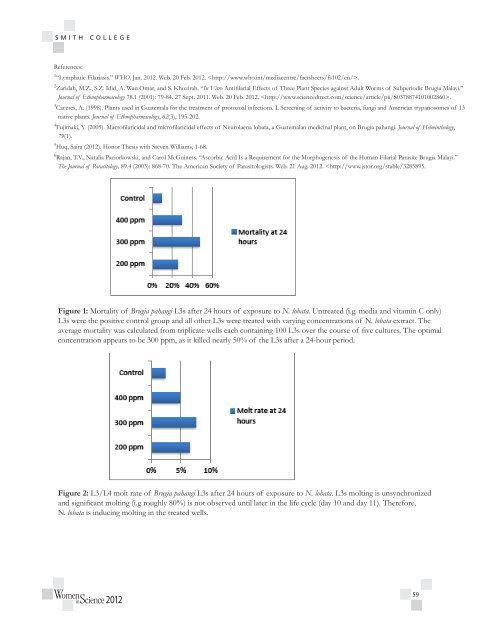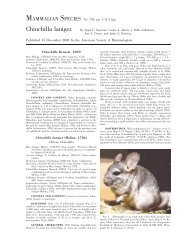Brugia Malayi - Clark Science Center - Smith College
Brugia Malayi - Clark Science Center - Smith College
Brugia Malayi - Clark Science Center - Smith College
Create successful ePaper yourself
Turn your PDF publications into a flip-book with our unique Google optimized e-Paper software.
References:<br />
1 “Lymphatic Filariasis.” WHO. Jan. 2012. Web. 20 Feb. 2012. .<br />
2 Zaridah, M.Z., S.Z. Idid, A. Wan Omar, and S. Khozirah. “In Vitro Antifilarial Effects of Three Plant Species against Adult Worms of Subperiodic <strong>Brugia</strong> <strong>Malayi</strong>.”<br />
Journal of Ethnopharmacology 78.1 (2001): 79-84. 27 Sept. 2011. Web. 20 Feb. 2012. .<br />
3 Caceres, A. (1998). Plants used in Guatemala for the treatment of protozoal infections. I. Screening of activity to bacteria, fungi and American trypanosomes of 13<br />
native plants. Journal of Ethnopharmacology, 62(3), 195-202.<br />
4 Fujimaki, Y. (2005). Macrofilaricidal and microfilaricidal effects of Neurolaena lobata, a Guatemalan medicinal plant, on <strong>Brugia</strong> pahangi. Journal of Helminthology,<br />
79(1).<br />
5 Huq, Saira (2012). Honor Thesis with Steven Williams, 1-68.<br />
6 Rajan, T.V., Natalia Paciorkowski, and Carol McGuiness. “Ascorbic Acid Is a Requirement for the Morphogenesis of the Human Filarial Parasite <strong>Brugia</strong> <strong>Malayi</strong>.”<br />
The Journal of Parasitology, 89.4 (2003): 868-70. The American Society of Parasitologists. Web. 21 Aug. 2012.

















